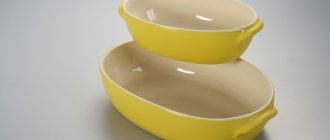The problem of storing shoes is very relevant. This point interests many people. Proper organization of the system for maintaining and saving leg clothing items solves many problems. Firstly, it allows you to increase the service life of the product. Secondly, it helps to save free space in a house or apartment. Thirdly, it helps to find the right model for a specific case.
For large families, families in which several generations live, and owners of small-sized housing, the issue of storing shoes is very acute. The ideal solution is to arrange a separate dressing room. If this is not possible, do not despair, a way out can be found in any situation.
Basic storage rules
The storage conditions of shoes significantly affect their properties, appearance, and durability. Its safety depends on many factors: exposure to sunlight, dust, humidity, room temperature, installation method, protection from moths and rodents. Having decided to organize a special maintenance system in your own home, you should adhere to certain rules:
- Initially, you should collect all the shoes, wash them, clean them of dirt, and dry them.
- The next step is to sort the items by season. It is necessary to separate spring, winter, summer, autumn models.
- Each pair must be carefully inspected. If defects are found, they will need to be corrected. If necessary, repair, glue the sole, replace the heel, insert the insole.
- Products that cannot be repaired should be disposed of. This step will save space and not clutter it with useless junk.
- To avoid deformation, delamination, and cracks, you need to straighten things out, put pads, paper, and plastic bottles inside.
- It is recommended to treat surfaces with softening cream and special substances appropriate for the material. This will prevent drying out and loss of shine.
- An important step is choosing a location. It should be dark, dry, and have good ventilation. Sunlight can lead to fading, high humidity can lead to the appearance of mold and mildew. It is also worth taking care of the distance from heating devices to avoid things from drying out.
- Perform zoning of space. Make room for men's, women's, and children's models. Provide for seasonal division.
- The ideal option would be to use a separate box for each pair.
Storing seasonal shoes
- Remove the insoles and laces in advance. Get rid of debris and wipe down your shoes with any disinfectant solution. Rinse the soles of dirt, clean the shoes with a brush or rinse if necessary. Dry, lubricate with cream taking into account the material of the product.
- There is no need to allocate separate space for storing winter or summer shoes. The main thing is to make sure that there is a box or container for each pair.
- Place newspapers in the cavity of winter shoes with fur so that the products do not lose their shape. Mothballs are also placed inside to repel moths if the inside of the shoe has fur.
- To prevent dust from settling, shoes and other types of dress shoes are placed first in covers, then in boxes. Over the knee boots and long boots should be placed in a case and hung (can be laid out) in a straightened form. No need to fold the boot.
- The storage location is chosen without sudden changes in temperature, dampness or excessive dryness. It is also necessary to check your shoes several times a season (every month) to prevent possible damage.
how to disinfect shoes from fungus
Dressing room and pantry: the best way to organize storage
In a large house, you can allocate a separate room for storing things. A walk-in closet is the perfect place to store all your shoes. Here you can provide special structures for placing items in sections. Properly organize a system for arranging everyday and seasonal shoes, and allocate a separate place for women's and men's models.
Owners of small apartments are less fortunate in this regard. But even in this case, do not despair. You can organize a dressing room in place of the pantry. For this, a room of 1 x 1.5 m is enough. It is necessary to take into account that the pantry is a closed space, so you will have to equip a forced ventilation system and choose the right lighting. After which you can place cabinets, bedside tables, racks, and shoe racks.
If for some reason it is not possible to convert the pantry, then you will have to look for alternative options. For example, in the summer, you can use a glazed balcony or loggia for these purposes. It is also worth thinking about the rational use of walls in the hallway or bedroom, equipping a special niche, and considering options for using pieces of furniture and the free space under them.
Storing shoes in cabinets and drawers
A convenient way to store shoes in a small room involves hiding them from view. An ordinary closet can help with this. There are many devices that allow you to compactly arrange shoes and boots on racks where there is plenty of space. You can purchase special organizers or make shelves yourself. The latter option requires minimal costs, since any available materials can be used for its implementation. When choosing a storage method and materials for stands, it is necessary to take into account the temperature and humidity in a particular room.
In textile bags on open shelves
Storing shoes in a closet is a great option for large families with children. All pairs can be placed on deep shelves. There is enough space even for last year’s models or units from last season. Children's shoes will fit comfortably in small closed drawers; for larger models, you will need to provide special organizers and containers.
It is better to store shoes on open shelves in special packaging that will protect them from external influences and damage. Textile organizers are very popular. The device looks like an extended chest of drawers with many similar compartments. It can be placed on any wardrobe shelf, vertically or horizontally.
Winter shoes and high autumn boots can be stored in special fabric bags. At the bottom of the wardrobe section of the wardrobe, a simple clothesline is pulled. Pairs in covers are fixed to it using clothespins. This method will help avoid creases in the material and will allow you to carefully place nubuck ankle boots and suede boots.
What fabric to use and how to sew shoe bags yourself
To make simple shoe bags, you only need minimal sewing skills. It is not necessary to use a machine; beautiful stitching can be done by hand with a needle. First of all, you need to choose a suitable fabric. It should be dense but breathable material. Spunbond fabric is suitable for anthers. Shoe storage bags are made very simply:
- We determine the parameters of the boots. Add a few centimeters to the numbers for seams and volume allowance;
- We double the dimensions and measure out a piece of fabric;
- Fold the fabric in half, wrong side up, and baste, leaving one side open;
- We make a place for the lace - we bend both sides with a double fold and sweep it away;
- We sew according to the stitching areas;
- We thread the rope and turn it over the face.
Various shoe organizers
With the help of simple devices it is very easy to place shoes in a closet without boxes. Simple ergonomic devices may contain cells, shelves, hanging devices, and hooks. You can place them on the floor in a closet or put them against the far wall. Shoe organizers can be made from various materials:
- Fabric. Suitable for soft summer shoes, house slippers, children's sandals;
- Cardboard. Used for seasonal storage, subject to rare use;
- Plastic. They look like tall racks or narrow racks. They are placed in the hallway for ease of frequent use;
- Wooden. Can be closed or open. They often have large cells for convenient storage of leather and patent leather shoes. They can be stationary or roll-out.
Hanging shelves
A convenient option for storing shoes in the hallway is to use a hanging shelf. The design can be straight or angular. This option is more suitable for young families without children or those with a small hallway. The main advantage of the design is significant space savings and the ability to adjust the height of the shelf at your discretion.
Modern wall-mounted shoe racks have an attractive appearance. The variety of models allows you to choose a suitable design for the interior of the room. Safe devices do not have sharp corners or far protruding parts, so they can be located in apartments with small children or a narrow corridor.
Special shelves for shoes
Shoe shelves in the closet are available in various models. They differ in size, type of construction, and can be open or have doors. When choosing a suitable option, it is necessary to take into account the number of pairs that will be in permanent or temporary storage, and the stylistic direction of the entire room. Special purpose shelves can be of the following types:
- Stationary. They have the simplest design. Standard shelves do not have a moving mechanism. They are fixed in a certain place using special bolts. Any cabinet can be equipped with horizontal slats.
- Retractable. Convenient moving structures. Shelves on rollers are attached to a fixed guide, which ensure movement. You can get the right pair from the depths easily and silently. They have an original design.
- Folding. They are located at a comfortable height, so you don’t have to bend low to get your shoes. The models are equipped with a special mechanism that slowly and carefully folds back the shelves. At the same time, the likelihood of falling and deformation of expensive shoes is minimized.
Storing shoes inside furniture
It is difficult to place a large number of shoes on special shelves. Especially problems arise with massive winter boots with the onset of spring. It makes no sense to keep them in the hallway, so they need to find a secluded place for more than six months. The following pieces of furniture are perfect for storage:
- Bed. Shoes folded into an organizer and covers can easily take up space under the bed. You can also use cardboard boxes, textile bags;
- Ottoman. Most of these products are multifunctional. Several pairs can be placed inside the ottoman. Some models are equipped with special containers for storing various things, so shoes do not require additional packaging;
- Chest-bench. Comfortable sofas and banquettes are often placed in the hallway. They are comfortable to lean on while changing shoes, and the hollow part under the seat is easy to use for storage. For convenience, you can use a special textile cover with cells.
Shoe storage
For everyday shoe storage, it is recommended to allocate a small wardrobe. The room should have good ventilation and shelves. If you do not have the opportunity to allocate space, use wardrobes and shoe boxes.
To store seasonal shoes without consequences, you can use cardboard boxes, organizers or special containers.
When choosing, be sure to look for the presence of ventilation holes, absence of odor and sufficient volume. Organizer
The device is distinguished by the presence of many compartments. They can store up to several pairs of shoes. The organizer also provides excellent air circulation.
Box
Boxes are convenient and practical for storing any shoes. The only downside is that you won’t see what product is there. However, you can sign. Modern models have a viewing window. You can buy it online.
Containers
A plastic container has a number of advantages over a classic cardboard box. This product has sufficient strength and transparency.
Make sure you have containers or boxes for each pair of shoes in advance. In this case, it is unacceptable to put sneakers, demi-season shoes, going out shoes and work boots “in a pile.” Otherwise, scratches and other damage will appear on the surface of the products.
how to dry sneakers quickly
DIY devices
There are many original ideas for arranging shoe storage. Convenient organizers, massive shoe racks, hanging racks and shelves are made to a certain standard. They are not always suitable in style and size for small dressing rooms or hallways. Homemade devices will last no less, but will add a certain zest to the interior of the room.
Rails and strips for storing shoes
You can organize compact shoe storage from long strips or sections of cornice. The convenient railing system is very popular. It is often used in spacious wardrobes to save space. Anyone can make an original stand with their own hands from scrap materials, based on a detailed description of the work progress.
You can install shoe rails at the bottom of the closet or niche. First, we measure the distance from one wall to the other and cut off two pieces of cornice with a small margin. We mark the location of the holes and drill the recesses. We place homemade roof rails one above the other. In this way, you can make holders for light shoes on the inside of the cabinet door.
PVC pipe rack for shoes
Light plastic can be used to make a beautiful shoe shelf or a large industrial-style rack. For the work you will need the pipes themselves, fittings, corners, and flat boards. First of all, we make a detailed drawing. It is necessary to indicate the specific installation location, the number of crossbars, and design parameters (height, width, depth).
Having prepared and cut the parts to size, you can proceed to assembling the rack. All elements must be assembled according to the previously created diagram. We put plugs on the legs and lean part of the structure against the wall. We make four holes in the wooden boards along the edges with a diameter slightly larger than the pipe. We thread them through, placing them at the required distance from each other. To increase the strength of the rack, the plastic joints can be additionally secured with self-tapping screws. If necessary, the pipes can be cleaned with sandpaper and painted with spray paint.
How to adapt regular hangers for shoes
The simplest coat hanger can be used as an original and practical shoe storage device. In this way, you can place pairs with high tops (boots, ankle boots) in a closet or niche.
The role of a rod can be performed by any rail or even a tight cord. We pass clothespins through the bottom bar of the hanger and pinch the shoes at the top of the boot. One item will fit a pair of boots. The ideal option is trouser hangers with soft bolsters. They will not damage the material and will not leave characteristic jagged creases.
Insects
The ubiquitous moth butterflies are a classic of the genre. Do you think moths will disdain shoes? You are wrong! This clothing locust is extremely democratic when choosing “dishes”. Natural fur on shoes, if there are also traces of sweat on it, is a wonderful delicacy. Also, a small detail: shoe boxes always (should have!) holes for ventilation. And if you leave fur shoes without proper attention, moths, alas, will definitely get there. The times of total shortages are long behind us, but in order to avoid not very pleasant incidents, we recommend treating shoes with fur trim with a special compound or anti-moth spray. Additionally, tablets, briquettes, plates, cedar balls or sachets and other repellents can be placed in shoe boxes or plastic containers.
To summarize, we can note the simplicity and accessibility of the rules considered: compliance with them does not require any difficulty or serious material costs for owners, and the result will be favorite shoes that can last for a long, long time.
How to properly care for and store shoes
Proper storage and care will extend the life of your shoes. Maintaining optimal temperature and humidity at its location will preserve its appearance without losing the quality characteristics of the material. Many of its species are very capricious. Therefore, it is necessary to protect your favorite shoes and boots as much as possible from contact with moisture, dust, and dirt. Care measures should include cleaning, washing, drying. For certain types of material, polishing and impregnation are used.
Leather
Before hiding leather shoes in a box, you need to carry out standard procedures: wash the soles, remove dirt and dust from the upper part and dry. If these are winter boots, the insoles must be removed and washed separately. Fasteners and locks must be unfastened and left open. Dried shoes should be soaked in protective cream several times and left on an open shelf until completely absorbed.
To keep boots or shoes in shape, crumpled paper or special foam products are placed in socks. If these are fur boots, they must be treated with a remedy against moths and other pests. It is better to store leather and leatherette in its natural position, without bending or twisting the tops. Low shoes are placed on the soles, and high ones are laid horizontally or hung in a case.
Leather shoes can only be dried outdoors. Do not place boots near open fires or heating devices.
Suede and nubuck
For regular care and preparation for storage, only products specifically designed for the material should be used for suede and nubuck. To clean fleecy shoes, use rubber brushes or a simple office grater. Suede products are not afraid of moisture, so they can be easily washed with warm water. Nubuck can only be cleaned with a dry brush.
Suede and nubuck shoes should be stored at average room temperature. Cured leather does not tolerate heat or cold. You cannot leave products on the balcony or in the garage in winter. Breathable materials must be used for packaging. Cardboard or a textile bag will do. Each boot must be wrapped separately.
Rubber Shoes
In order for rubber boots to perform their functions for as long as possible and maintain their integrity, it is necessary to provide them with high-quality care. It is necessary to wipe off moisture from both the outer and inner surfaces. You can remove dirt or scratches from white items using an eraser or a piece of rubber.
Before storing boots for long-term storage, the entire surface should be treated with glycerin or special oil for rubber products. If they have been worn for a long time, the inside must be disinfected. To treat and eliminate unpleasant odors, use a weak solution of potassium permanganate or hydrogen peroxide.
The storage space for rubber shoes should be spacious and not require squeezing or bending. The optimal temperature is 5-15 °C. Models with high tops are stored in an upright position.
Patent leather shoes
Only special care products are suitable for such products. Impregnations for varnish are water-based, which provides soft, gentle moisture. You can even disguise scratches and abrasions with a simple nail polish of a suitable color. To soften the material and prevent cracking, it is recommended to use Vaseline after each contact with water.
Since patent leather shoes are not intended for daily wear, it is very important to ensure proper storage. To maintain the shape of a varnished pair, special holders are used - blocks made of wood, plastic, or foam. They are placed inside and twisted, stretching the boots in width and length. Patent leather shoes must be stored in separate bags. Shiny surfaces should not touch, otherwise they may become dull or scratched.
Storing shoes made from different materials
- To learn how to store shoes, you need to take into account the characteristics of the materials. If your product is made of patent leather, it must be treated with glycerin or petroleum jelly before storage. Insert spacers into the shoes and wrap them with special paper.
- In most cases, leather products need to be treated with cream. The composition must be rubbed in with a soft brush. Finally, the shoes are polished with flannel cloth. Store the product flat with spacers.
- If you decide to store rubber shoes, you must first thoroughly wash and dry them. Then rub with a sponge soaked in glycerin. This way the shoes are not at risk of delamination.
- Suede products must be handled with care. Wash your shoes and wait to dry. If necessary, clean the coating with a special brush.
- To preserve fabric or sports shoes, they need to be washed in a soapy solution. After drying, the product is placed in a bag with mothballs. The substance must not be used for rubber shoes.
how to properly care for suede shoes











